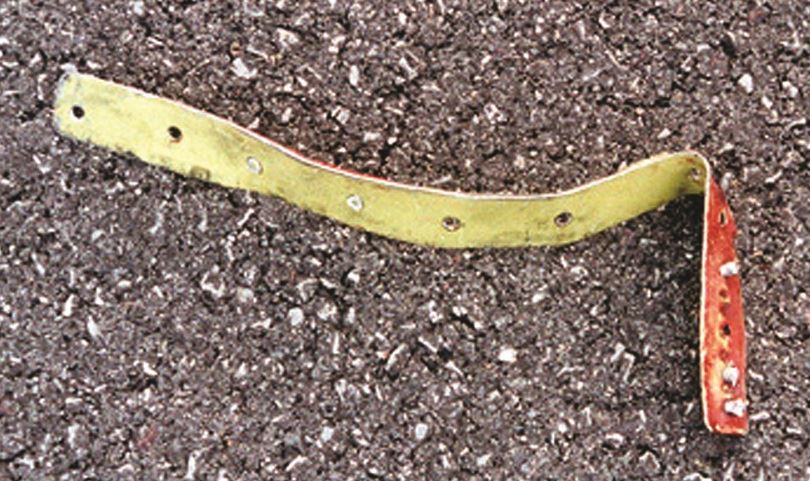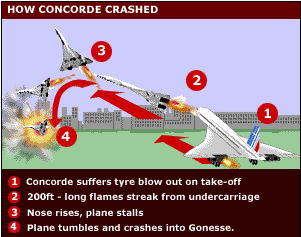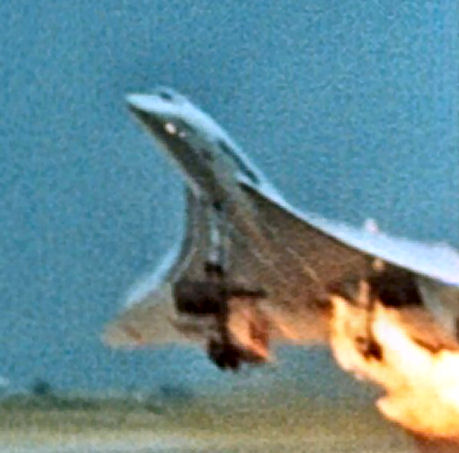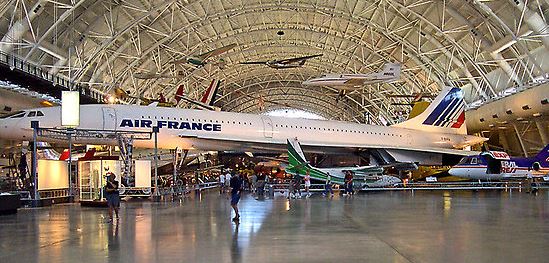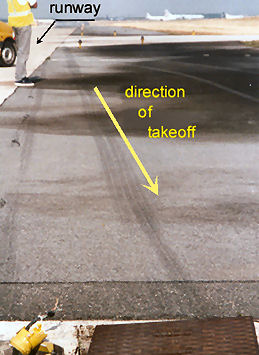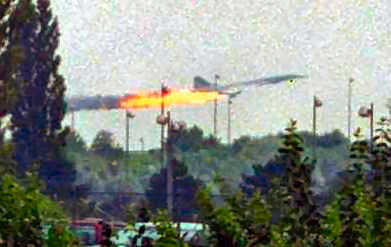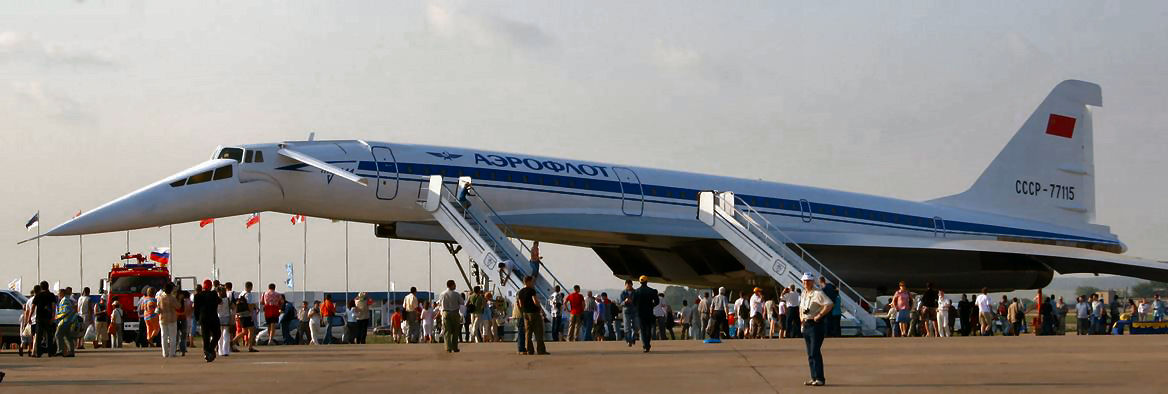|
|
|
Radschool Association Magazine - Vol 42 Page 13 |
|
Privacy Policy | Editorial Policy | Profit Policy | Join the Association | List of Members | Contact us | Index | Links |
|
Back Go to page: 1 2 3 4 5 6 7 8 9 10 11 12 13 14 15 16 17 18 19 20 Forward |
|
|
|
It’s Elementary.
Anthony Element
|
|
Too Much Christmas is Never Enough!
|
|
|
|
|
|
One of several items that God, or whoever is supposed to be organising these things – always assuming that someone really is – didn’t get quite right is the aging process. It turns out that as we gain in, er… experience, we lose our hair, our good looks, (in the event that we had any to begin with), and our energy.
But not our appetites.
I mention this because, once again, I was confronted with my usual New Year problem; a certain, but only moderate you understand, expansion of the girth. Actually, it’s not just limited to the girth. My granddaughter asked me how come my cheeks had gotten chubbier.
Brat!
Anyhow, this transformation was a natural consequence of Christmas; a time when I actually, if such a thing is possible, do less than usual while scoffing more. Considerably more this year, as it turned out.
By the by, I blame the national underlying, (perhaps, ‘overlying’ might be a more precise definition), weight problem, on the whole decimal thing. At about the time we went from miles to litres, we all started to get fatter. Why? Because being told I have to lose five kilos doesn’t seem like such a biggy. I can always worry about that later. But eleven pounds, uh-oh, that sounds like a lot. Hearing that would, (well, might) spur me into action.
Anyway, back to my post-Christmas expansion.
Thing is, Christmas left overs taste so much nicer than regular leftovers. And there’s so damned much of them. I mean, what’s a man to do? Waste it all? I don’t think so.
Wives, and a few husbands, tend to be good cooks. The only problem is, my wife is – how shall I put this? Have to find a way that will see me still alive, and married, come next Christmas…Let’s say, she’s an… enthusiastic cook. See, she worries that if everything gets eaten up in a single meal, guests might think she’s stingy. Look, the entire 3RAR could come to lunch and they still wouldn’t think she was stingy. And she wouldn’t have to cook any more than she usually does.
Every year, I’m astonished anew at how much can be crammed into our fridge. Makes the Tardis look like a shoe box. And every scrap of the contents, tantalising. As in, get up in the middle of the night for a snack even though you’re not hungry, tantalising. It’s the one time of the year when every bit of Tupperware in the entire collection we’ve assembled over a forty something year marriage gets its annual work out.
By the way, I’ve always had a sneaking admiration for the Tupperware people. It must be the only company in the world whose products don’t have a built in use by date so they can sell you some more. They just sell you some more anyway. Neat trick!
Well, there we were with a fridge full of heavily laden plastic boxes stacked like the pile of bricks I once bought with the intention of building a BBQ, (which I never got around to), so what was my role in all this? Well, it was to empty them of course. Which I did. Dilligently.
Early start, late finish, the whole nine yards; no effort spared.
This year it was my sister-in-law’s responsibility to provide desert for the family Christmas lunch; a chocolate log, as it turned out. Had disaster written all over it. For a start, it’s been scientifically proven that chocolate doesn’t keep, so once you start…A pretty sight, it was not.
I did try though. When we heard that my nephew and his family were to visit a couple of days after Christmas, my wife said we’d need to get something to give them for afternoon tea. I suggested giving them left overs. Well, you can imagine what kind of a look that got me. But see, I tried to give it away.
It has been suggested that exercise might help. Good luck with that idea.
That’s another thing I blame God or whoever for. If he’d only seen fit to leave me with two working knees, I might even have contemplated a squat or two; or even a brisk walk. Well, a walk, anyway. Thing is, once we got Christmas out of the way we had to deal with New Year’s Eve. Now, I ask you, who eats a small meal on New Year’s Eve? Actually it was New Year’s Day that got me really thinking about this whole catastrophe. I was getting dressed. “Hey love,” I called out. “There’s something wrong with my belt.”
“What?” she said, “It won’t do up.” I said
“Mmmm,” Marie responded; which is her way of combining “Yes dear,” with
“Oh really?” “I know what it is,” I said. “I had a, er, few vinos last
night and that makes you retain fluid.” No reply for a while, then,
“Actually, it was quite a few vinos you had last night.” “No worries
then,” I said, reaching for my braces. “All I have to do is to drink
plenty of water
Now that’s yet another bone I have to pick with the Great Designer. When you retain water you fix it by drinking more, but when you retain food, you fix it by eating less. Well where’s the sense in that? And so I ended 2012 as I ended most other years; with several sheets to the wind, a decided list and way too much ballast.
Oh well, I’ve got all of 2013 to do something about it.
Yeah, like that’s going to happen. I think I’ll pack this in now.
There’s just a tiny bit of Christmas cake left in the cupboard…
|
|
A wife went in to see a therapist and said, 'I've got a big problem, doctor. Every time we're in bed and my husband climaxes, he lets out this ear splitting yell.' 'My dear,' the shrink said, 'that's completely natural. I don't see what the problem is.' 'The problem is,' she complained, 'it wakes me up!'
|
|
The Concord.
Some time back
a rather long troubling report was received on the Air France Concorde
crash. It seems something else might have been a contributing factor
which was never mentioned....There was a modification to the underside
of the
December 9, 2012.
A French Appeals Court overturned a manslaughter conviction against Continental Airlines for its role in the crash of an Air France Concorde outside Paris twelve years ago. Concord flight 4590 was a charter destined for New York’s JFK airport on the 25th July, 2000, carrying mostly German tourists headed to South America . As it neared take off speed, the Concorde struck a thin metal strip on the runway, causing one of its tyres to burst. The strip had fallen from the underside of a Continental Airlines DC-10 that had departed minutes earlier, bound for Houston.
Chunks of the burst tyre impacted the Concorde’s wing at tremendous velocity, resulting in a powerful shock wave within the wing’s fuel tank that ultimately punctured it. Gases from the engines then ignited leaking fuel, touching off a huge fire. The crew wrestled the crippled jet into the air, but lost control moments later, slamming into a hotel. All 109 passengers and crew perished, as did four people on the ground.
All along, conventional wisdom, bolstered by lethargic media coverage, has held that the fuel tank fire was the direct cause of the crash. This from the Associated Press is a typical example of what the public has been reading and hearing: “The burst tyre sent bits of rubber flying, puncturing the fuel tanks, which started the fire that brought down the plane.”
But this isn’t so.
There’s no denying the jet ran over an errant piece of metal that caused
a tyre explosion and a resultant fire. But while
The plane went down not because of any fire, directly, but because:-
1. it was flying too slowly; 2. it was several tons overweight and beyond its aft centre of gravity limit; 3. two of its four engines were damaged or erroneously shut down; 4. it was over-fueled.
It was flying too slowly because the pilot at the controls, Christian Marty, had pulled the jet into the air to avoid skidding sideways off the runway and colliding with another plane. Why it was skidding has been the subject of contention, but as we’ll see in a minute, many believe the skid was caused by an improperly repaired landing gear.
Under normal circumstances Marty still had enough speed to climb away safely; however, he no longer had enough power. One engine had been badly damaged due to ingestion of foreign material — not only pieces of exploded tyre, but debris from a runway edge light the jet had run over during the skid. A second engine, meanwhile, was shut down completely by the cockpit flight engineer — at a time and altitude when he was not supposed to do this, when remaining thrust from that engine was desperately needed for survival.
All the while, the plane was an estimated six tons above its maximum allowable weight based on weather conditions at the time of the crash.
At proper weight, the jet would have become airborne prior to the point when it ran over the metal strip. Further, the fuel tank that was struck by tyre debris had been over-filled. In normal operations the wing tank was not to be filled beyond 95% of capacity to allow for thermal expansion during flight, with an exception for up to 98% capacity under certain conditions. The tank on the ill-fated flight was filled to 100%, leaving no space for compression. Fuel itself will not compress, so when debris struck the tank, it resulted in a shock wave that caused a puncture — in a location several meters away from the point of impact.
The November 29th court verdict was, if nothing else - fair.
“France is one of a handful of countries that routinely seek criminal indictments in transportation accidents, regardless of whether there is clear evidence of criminal intent or negligence”, reported the New York Times. All along, aviation safety specialists were highly critical of the suit, believing that such prosecutions set a dangerous and destructive precedent, undermining crash investigations and air safety in general. “The aviation safety community is going to view this verdict with great deal of relief,” said William R. Voss, president of the Flight Safety Foundation, speaking in the Times article. “It reminds us that human error, regardless of the tragic outcome, is different from a crime.”
Well and good. However, does the full and true story of the disaster remain untold?
A story ran in the British newspaper The Observer in 2005. Written by reporter David Rose, it is a gripping, startling story.
It read!!
Doomed: THE REAL STORY OF FLIGHT 4590
It is an indelible image, heavy with symbolism: the photograph taken on 25 July 2000, at the moment Concorde became a technological Icarus. The great white bird rears up over runway 26 at Charles de Gaulle, immediately after takeoff. Already mortally wounded, flames bleed uncontrollably from beneath the left-hand wing. Less than two minutes later, the world’s only supersonic airliner will fling itself into the Paris suburb of Gonesse, killing all 109 on board and another five on the ground.
The official investigation has focused almost entirely on the fire. According to the French accident investigation bureau, the BEA, “it broke out when the plane passed over a strip of metal on the runway. A tyre burst; a chunk of rubber thudded into a fuel tank inside the wing; jet fuel poured out of a hole and ignited.
The hot gases caused two of the engines to falter, and despite a valiant struggle by Captain Christian Marty, a daredevil skier who once crossed the Atlantic on a windsurf board, the loss of thrust made the crash inevitable”.
An investigation by The Observer suggests the truth is much more complicated. In the words of John Hutchinson, a Concorde captain for 15 years, the fire on its own should have been “eminently survivable; the pilot should have been able to fly his way out of trouble.” The reason why he failed to do so, Hutchinson believes, was a lethal combination of operational error and negligence. This appears to have been a crash with more than one contributing factor, most of which were avoidable.
Go back to that photograph. An amazing picture: but from where was it taken? The answer is: inside an Air France Boeing 747 which had just landed from Japan and was waiting to cross Concorde’s runway on its way back to the terminal.
Concorde looks to be nearby because it had been close to hitting the 747, an event which would have turned both aircraft into a giant fireball. Veering wildly to the left, like a recalcitrant supermarket trolley with a jammed wheel, Concorde’s undercarriage had locked askew. When Marty pulled back on the control column to raise the nose and take to the air the plane’s airspeed was only 188 knots, 11 knots below the minimum recommended velocity required for this manoeuvre.
But he had no choice: the plane was about to leave the tarmac altogether and plough into the soft and bumpy grass at its side. That might have ripped off the landing gear, leaving Concorde to overturn and blow up on its own. If not, the 747 lay straight ahead. So he took to the air, although he knew he was travelling too slowly, which would impair the damaged plane’s chances of survival. Shocking evidence now emerging suggests that the Air France Concorde F-BTSC had not been properly maintained. The airline’s ground staff had failed to replace a “spacer” — a vital component of the landing gear which keeps the wheels in proper alignment. Although the BEA disputes it, there is compelling evidence that it was the missing spacer which may have caused the plane to skew to the left, so forcing Marty to leave the ground too early.
At the same time, the plane was operating outside its legally certified limits. When it stood at the end of the runway, ready to roll, it was more than six tonnes over its approved maximum takeoff weight for the given conditions, with its centre of gravity pushed dangerously far to the rear. Even before the blowout, Marty was already pushing the envelope.
The stresses on Concorde’s landing gear are unusually severe. At regular intervals, the various load-bearing components become “lifed” and must be replaced. When the undercarriage bogeys are taken apart and reassembled, the work must be done according to a rigid formula, and rigorously inspected and assessed.
Concorde F-BTSC went into the hangar at Charles de Gaulle on 18 July, a
week before the crash. The part which was lifed was the left
undercarriage beam — the horizontal tube through which the two wheel
axles pass at each end.
In the days before the accident, the aircraft flew to New York and back twice. At first, the load-bearing shear bushes remained in the right positions. But the right-hand bush began to slip, down into the gap where there should have been a spacer. By the day of the crash, it had moved about seven inches, until the two washers were almost touching. Instead of being held firmly in a snug-fitting pivot, the beam and the wheels were wobbling, with about three degrees of movement possible in any direction. As the plane taxied to the start of the runway, there was nothing to keep the front wheels of the undercarriage in line with the back. The supermarket trolley was ready to jam.
Exactly when it started to do so is uncertain. Jean-Marie Chauve, who flew Concordes with Air France until his retirement, and Michel Suaud, for many years a Concorde flight engineer, believe the undercarriage was already out of alignment when the plane began to move down the runway.
They have spent the past six months preparing a 60-page report on the crash. Chauve said: “The acceleration was abnormally slow from the start. There was something retarding the aircraft, holding it back.” Chauve and Suaud’s report contains detailed calculations which conclude that without this retardation, the plane would have taken off 1,694 metres from the start of the runway — before reaching the fateful metal strip.
The
BEA contests these findings, saying that the acceleration was normal
until the tyre burst. It also maintains that even after the blowout, the
missing spacer was insignificant. The BEA’s critics say that once the
tyre burst, the load
In one picture, the foreground depicts a smashed yellow steel landing light on the very edge of the made-up surface, which was clipped by the aircraft as Marty tried to wrest it into the air. Industry sources have confirmed that this probably had further, damaging results. Until then the number one engine had been functioning almost normally but when the plane hit the landing light it ingested hard material which caused it to surge and fail. This hard material, the sources say, was probably parts of the broken light.
John Hutchinson said: “The blowout alone would not cause these marks. You’d get intermittent blobs from flapping rubber, but these are very clearly skids.” In its interim report, and in a statement, the BEA said that the leftwards yaw was caused not by the faulty landing gear but by “the loss of thrust from engines one and two”.
There are several problems with this analysis:
First, as the BEA’s own published data reveals, the thrust from engine one was almost normal until the end of the skid, when it took in the parts of the landing light. It is simply not true that the yaw began when both engines failed.
Second, those who fly the plane say that a loss of engine power will not cause an uncontrollable yaw. The Observer has spoken to five former and serving Concorde captains and flying officers. All have repeatedly experienced the loss of an engine shortly before takeoff in the computerised Concorde training simulator; one of them, twice, has done so for real. All agree, in John Hutchinson’s words, “It’s no big deal at all. You’re not using anything like the full amount of rudder to keep the plane straight; the yaw is totally containable.”
Other avoidable factors were further loading the dice, making it still more difficult to rescue the plane. When Marty paused at the start of the runway, his instruments told him that his Concorde had 1.2 tonnes of extra fuel which should have been burnt during the taxi. In addition, it contained 19 bags of luggage which were not included on the manifest, and had been loaded at the last minute, weighing a further 500 kg. These took the total mass to about 186 tonnes — a tonne above the aircraft’s certified maximum structural weight.
Meanwhile, in the interval between Concorde’s leaving the terminal and reaching the start of the runway, something very important had changed: - the wind. It had been still. Now, as the control tower told Marty, he had an eight-knot tailwind. The first thing pilots learn is that one takes off against the wind. Yet as the voice record makes clear, Marty and his crew seemed not to react to this information at all. Had they paused for a moment, they might have recomputed the data on which they had planned their take-off. If they had, they would have learnt a very worrying fact. The tailwind meant that Concorde’s runway-allowable take-off weight was just 180 tonnes — at least six tonnes less than the weight of Flight 4590.
John Hutchinson said: “The change in the wind was an incredible revelation, and no one says anything. Marty should have done the sums and told the tower, ‘Hang on, we’ve got to redo our calculations.’” The extra weight had a further consequence beyond simply making it harder to get into the air. It shifted the centre of gravity backwards: the extra bags almost certainly went into the rear hold, and all the extra fuel was in the rearmost tank.
A plane’s centre of gravity is expressed as a percentage: so many per cent fore or aft. Brian Trubshaw and John Cochrane, Concorde’s two test pilots when the aircraft was being developed in the early 1970s, set the aft operating limit at 54 per cent — beyond that, they found, it risked becoming uncontrollable, likely to rear up backwards and crash, exactly as Flight 4590 did in its final moments over Gonesse. The doomed plane’s centre of gravity went beyond 54 per cent. The BEA states a figure of 54.2 per cent. A senior industry source says the true figure may have been worse: with the extra fuel and bags, it may have been up to 54.6 per cent. And as the fuel gushed from the hole in the forward tank, the centre of gravity moved still further back.
When the plane was just 25 feet off the ground, Gilles Jardinaud, the flight engineer, shut down the ailing number two engine. Both French and British pilots say it was another disastrous mistake, which breached all set procedures. The engine itself was not on fire and as the tank emptied and the fire burnt itself out, it would probably have recovered. The fixed drill for shutting down an engine requires the crew to wait until the flight is stable at 400 feet, and to do so then only on a set of commands from the captain. In a comment which might be applied to the whole unfolding tragedy, John Hutchinson said: “Discipline had broken down. The captain doesn’t know what’s happening; the co-pilot doesn’t know; it’s a shambles.”
Previous reports of the tragedy have described the crash as an act of God, a freak occurrence which exposed a fatal structural weakness in the aircraft which could have appeared at any time. The investigation by The Observer suggests the truth may not only be more complicated, but also sadder, more sordid. Men, not God, caused Concorde to crash, and their omissions and errors may have turned an escapable mishap into catastrophe.
The issues raised by David Rose, which at first were dismissed as so much conspiracy mongering, are now generally accepted facts within the aviation community, and have been more or less confirmed by investigators, however quietly. The November, 2012 court ruling does not explicitly says so, but it is, in its own way, a tacit acknowledgment of the full story, one in which Continental Airlines played at worst a supporting role. This accident is an outstanding example of something we’ve seen time and time again in airplane crashes: multiple errors, none of them necessarily fatal on their own accord, combining and compounding at the worst possible moment to precipitate a catastrophe. Rarely is the cause of disaster something simple and unambiguous.
Both British Airways and Air France, the only two operators of the Concorde, grounded their fleets following the 2000 disaster. The planes were reintroduced following a fuel-tank redesign, but both carriers withdrew them from service permanently in 2003, after 27 years of service, citing prohibitively expensive operating and upkeep costs. Only twenty Concordes had been built, four of which were prototypes or pre-production examples. The Air France crash marked its only fatal accident.
Concorde was not the only supersonic passenger aircraft. There was also its Soviet cousin, the Tupolev Tu-144, which also suffered a single fatal accident over the brief course of its commercial tenure. In 1973 a Tu-144 crashed during a demonstration at the Paris Air Show. The Tupolev had taken off from Le Bourget airport, where Captain Marty and his crew were attempting an emergency landing when their Concorde went down in 2000
|
|
Tired of a listless sex life, the man came right out and asked his wife during a recent love-making session, 'How come you never tell me when you have an orgasm?' She glanced at him and replied, 'You're never home!'
|
|
Back Go to page: 1 2 3 4 5 6 7 8 9 10 11 12 13 14 15 16 17 18 19 20 Forward |
|
|

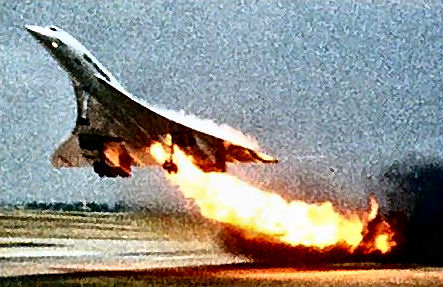 fuselage which "armour plated" the exact area where the puncture
occurred. British Airways modified their fleet...Air France elected not
to do the mod as it added lots of extra weight to the airframe hence
reducing revenue.
fuselage which "armour plated" the exact area where the puncture
occurred. British Airways modified their fleet...Air France elected not
to do the mod as it added lots of extra weight to the airframe hence
reducing revenue.